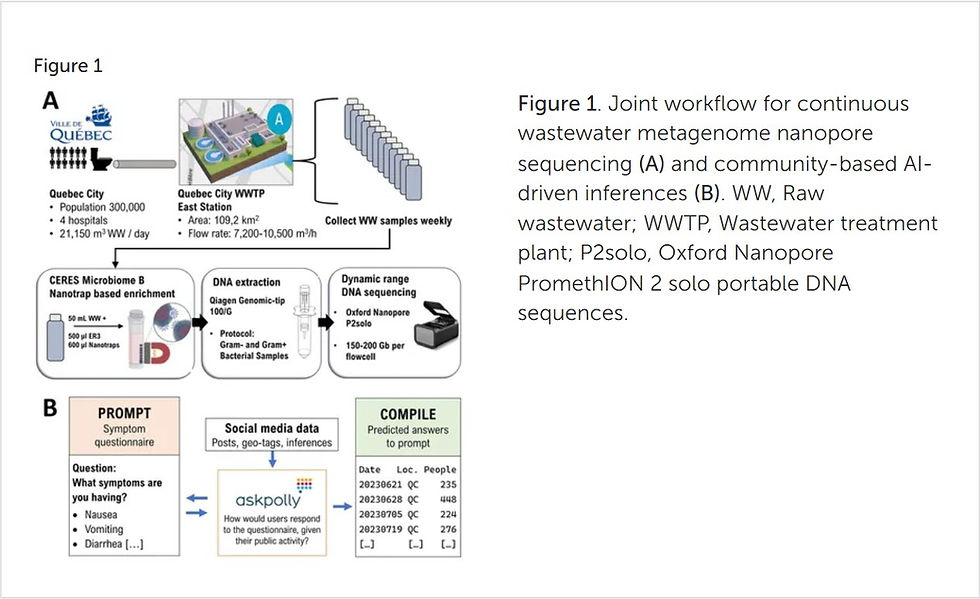Wastewater sequencing uncovers early, cryptic SARS-CoV-2 variant transmission
- rdunlap
- Jul 7, 2022
- 1 min read
ABSTRACT: As SARS-CoV-2 becomes an endemic pathogen, detecting emerging variants early is critical for public health interventions. Inferring lineage prevalence by clinical testing is infeasible at scale, especially in areas with limited resources, participation, or testing/sequencing capacity, which can also introduce biases. SARS-CoV-2 RNA concentration in wastewater successfully tracks regional infection dynamics and provides less biased abundance estimates than clinical testing. Tracking virus genomic sequences in wastewater would improve community prevalence estimates and detect emerging variants. However, two factors limit wastewater-based genomic surveillance: low-quality sequence data and inability to estimate relative lineage abundance in mixed samples. Here, we resolve these critical issues to perform a high-resolution, 295-day wastewater and clinical sequencing effort, in the controlled environment of a large university campus and the broader context of the surrounding county. We develop and deploy improved virus concentration protocols and deconvolution software that fully resolve multiple virus strains from wastewater. We detect emerging variants of concern up to 14 days earlier in wastewater samples, and identify multiple instances of virus spread not captured by clinical genomic surveillance. Our study provides a scalable solution for wastewater genomic surveillance that allows early detection of SARS-CoV-2 variants and identification of cryptic transmission.




Comments